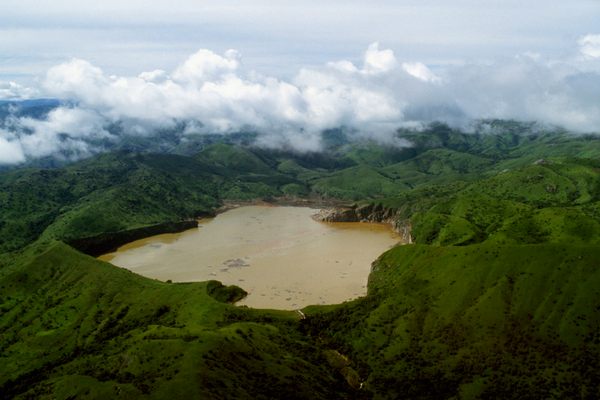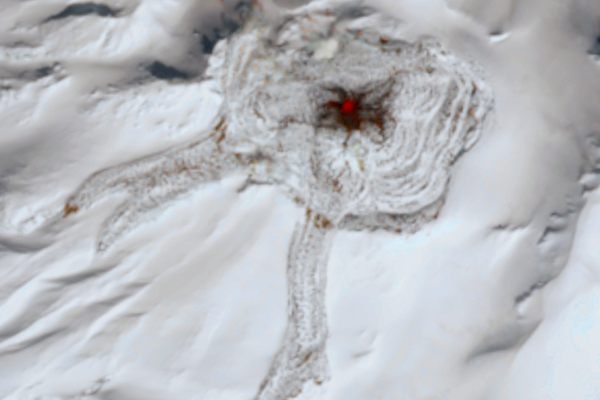Journeying to Jules Verne’s Center of the Earth on an Icelandic Volcano
The Snæfells peninsula in Iceland (all photographs and illustrations by the author)
Welcome to Snæfells, a little peninsula on the west of Iceland, around 190 km away from Reykjavík. Given the roads in the island (70 Km/h at most) and its population density, the place is basically in what I’d call the middle of nowhere. There are no major villages on the way — except for the fishing village Stykkishólmur (1,100 inhabitants), an early trading post in the XVI century. Nothing… except the entrance to the center of Earth. Or, at least, that’s according to Jules Verne’s A Journey to the Center of Earth (1864).
The road to the Snæfellsjökull
In his novel, Jules Verne describes how professor Otto Lidenbrock’s expedition travels all the way to a volcano in Iceland, which he believes to lead to the center of the Earth after decoding some ancient notes in a runic manuscript (chapter XV):
We were now beginning to scale the steep sides of Snæfell. Its snowy summit, by an optical illusion not unfrequent in mountains, seemed close to us, and yet how many weary hours it took to reach it! The stones, adhering by no soil or fibrous roots of vegetation, rolled away from under our feet, and rushed down the precipice below with the swiftness of an avalanche.
The Snæfellsjökull volcano
This volcano was the Snæfellsjökull (Snæfells glacier), a stratavolcano around 1,200 meters (3,937 feet) high. Unlike other Icelandic volcanoes, this one seems to be particularly quiet: the last eruption was around 200 AD and, taking into account that I’m quite the jinx and it did not so much as shake during my visit, it looks like it will stay that way.
The waiting spot for transportation
The way to Snæfells is nice, but nothing too flashy when compared to the glaciers and waterfalls on other parts of the island. It is mostly a rocky place covered with moss, short, thick grass, and flowerless plants. Most of the time, the sea is nearby on one side or the other of the road. There are also birds, mostly seagulls and, if one is lucky, puffins, as well as some other species I could not identify. At the end of the road, there are a couple of cabins.
The weather starts to get worse in the glacier
Getting to the top of the volcano is kind of tricky, and it is better to book an expedition with the locals. Some companies organize five hour hiking tours in the park, but there are sleeker options to reach the crater. Snjófell operates a small fleet of snow bikes and they organize visits every few hours, although it’s advisable to contact them beforehand to spare the long road trip in case it is impossible to get to the top due to bad weather conditions They pick you up where the road ends in a special vehicle and get you to the departure island, where the bikes are waiting.
Snowbikes to the top
Snow bikes can be a bit tricky to drive if one has no experience. They obviously do not respond like a conventional bike nor like a quad. In fact, if someone is familiar with nordic skiing, the control feeling is similar, only you don’t have to be fit to move the thing. However, it tends to drift and slip more often than not and if the driver tries to compensate too fast … well, the best I can say is that I didn’t fall myself. In any case, the suit you need to wear is thick enough to prevent major damage if one is not driving too fast — and to prevent looking good in any picture you may take during the trip, too — so the only real danger would be to lose your way and fall into a crevice or off a cliff. It won’t happen if one does not lose sight of the guide, but when the weather is foul, this is no small task.
The (almost invisible) volcano crater
Problem is, weather conditions on mountains are not that easy to predict: you might get a sunny day near the coastline and a John Carpenter-like thick wall of mist on the top. The only option for non-experts is to go slower and try to follow bike tracks on the ground as long as they are visible.
A quick stroll at the summit
Once one gets to the top of the mountain, it is necessary to drop the bike and get to the crater by foot. Here, you can’t see anything but white. At this point, you’ll be very grateful if you brought your good ol’ Goretex boots with you. A woolly cap won’t be unwelcome, either. There are nice lava formations around, but in my case all the way to the crater was basically mist and snow, so it took a bit of care to reach just the border instead of going all the way to the bottom. Very quickly, too. Under these weather conditions it might be a bit disappointing that visibility on the summit is basically null, but I think that the trip there basically pays off.
Walking around glacier gets trickier by the minute
As Jules Verne wrote of the summit:
It measured about a hundred feet in diameter, which made about three hundred in circumference. I leaned over a rock which stood on its edge, and looked down. My hair stood on end, my teeth chattered, my limbs trembled. I seemed utterly to lose my center of gravity, while my head was in a sort of whirl, like that of a drunken man. There is nothing more powerful than this attraction towards an abyss. I was about to fall headlong into the gaping well, when I was drawn back by a firm and powerful hand. It was that of Hans. I had not taken lessons enough at the Frelser’s-Kirk of Copenhagen in the art of looking down from lofty eminences without blinking! (Journey to the Center of Earth, Chapter XIV)
Back to the coast and back to the sun
The way back down the volcano is usually a bit colder, as you’re wet and quite tired — maybe bruised too — plus it is a long way to the nearest hotel booking rooms, so it is advisable not to waste too much time walking around. It would have been perfect if the Blue Lagoon was closer, so we could finish the experience with a long outdoor bath in hot waters. We had to do with a fish dinner and local beer instead, a perfect way to blend with the locals too, and enjoy everyday life on the country.
This is the final conclusion of a narrative which will be probably disbelieved even by people who are astonished at nothing. I am, however, armed at all points against human incredulity (Jules Verne, “A Journey to the Center of Earth,” chapter XLIV)



















Follow us on Twitter to get the latest on the world's hidden wonders.
Like us on Facebook to get the latest on the world's hidden wonders.
Follow us on Twitter Like us on Facebook